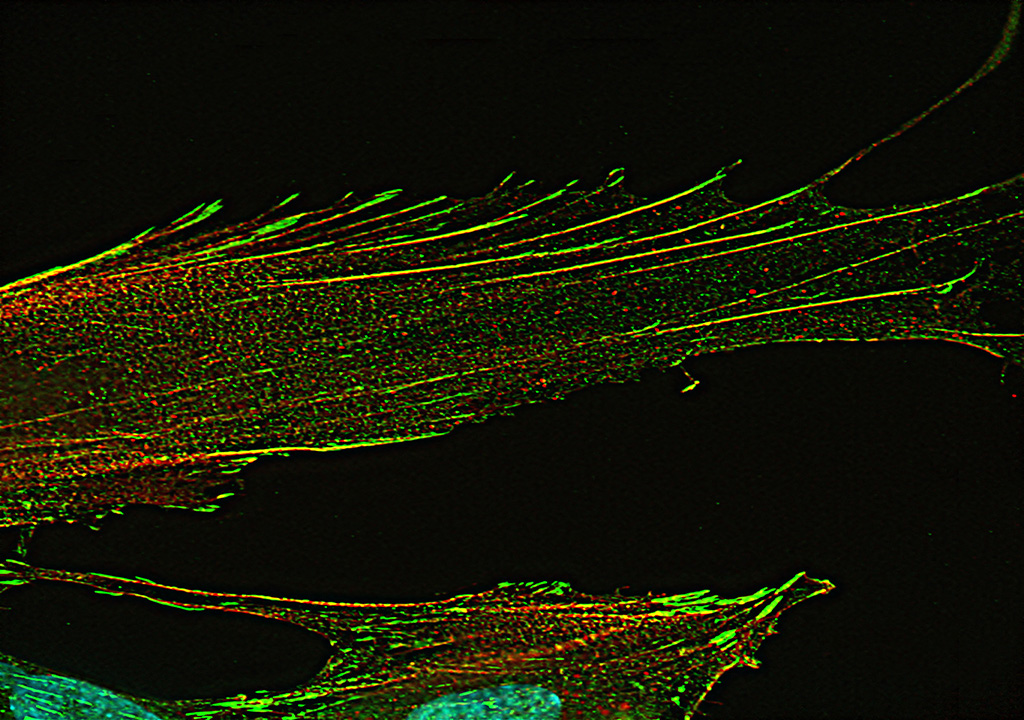
HSPB1: small protein a potential pregnancy powerhouse
The statistics are staggering: preterm or premature birth affects 15 million babies worldwide. These infants, born at fewer than 37 weeks of pregnancy, are at a greater risk for complications such as cerebral palsy, development delays and sight or hearing problems.
By Ayomikun OlalokuBut what if we were able to dramatically reduce those numbers and save millions of children in the process? That’s the question that has motivated Dr. Daniel MacPhee and researchers at the Western College of Veterinary Medicine (WCVM) for over 20 years as they’ve explored the complex mechanisms of reproduction.
In particular, the scientists have been examining the human myometrium, the muscle portion of the uterus that becomes a contractile powerhouse at labour. Because pregnancy and the differentiation of the myometrium are highly complex subjects, MacPhee and his research teams have investigated the myometrium at the cellular, tissue, and organismal levels.
“You can’t rush research,” says MacPhee, an associate professor in the WCVM’s Department of Veterinary Biomedical Sciences. “It has to be done in an incremental step-by-step process while you validate things as you go along. You build a bit of data, you build more questions, you build another set of experiments, you test new hypotheses, and you just keep on adding to the understanding of a function of a protein, and that is where we are headed.”
In their latest project, the researchers are diving to the cellular level as they examine the proteins that play a role in the myometrium. While numerous proteins are involved in myometrial development, this study is zeroing in on the protein heat shock protein B1 (HSPB1) and examining its interactions with other specific proteins — vasodilator phosphoprotein (VASP) and zyxin.
The scientists are investigating the myometrium cells to determine whether or not the proteins HSPB1, VASP and zyxin interact with the cells’ actin cytoskeleton. That’s the major component of a cell that guides its shape, motility, and in the case of muscle cells — contraction.
Previous research has established that VASP and zyxin are key players involved in remodelling the actin cytoskeleton and that HSPB1 also influences and interacts with the actin cytoskeleton. In addition, HSPB1 is expressed in the uterine muscle, and its expression increases just prior to and during labour — an indication that HSPB1 may be involved in contraction.
Utilizing immunocytochemistry, a procedure that uses fluorescent staining to image structures and components within cells, MacPhee and his research team have now verified that there are interactions between zyxin, HSPB1, VASP and the actin cytoskeleton.
These findings establish that HSPB1 may play a crucial role in myometrial development and ultimately the labour process.
The development of the myometrium and the process involved with labour are highly complex topics. But using the results from this study, the WCVM researchers can now investigate further and learn even more about the function of HSPB1 as they develop a greater understanding of the myometrium and the process by which it contracts during pregnancy and labour.
That additional knowledge could enable physicians to implement early interventions and diagnostic tools that can decrease or even prevent the likelihood of preterm labour.
Although the final key to decreasing or preventing preterm labour is still unknown, the incremental steps that MacPhee and his research team are taking today promise to have powerful ramifications in the future.
Ayomikun Olaloku is a fourth-year studen in the Physiology and Pharmacology program in the USask College of Arts and Science. Her story is part of a series of articles written by summer research students at the WCVM.
